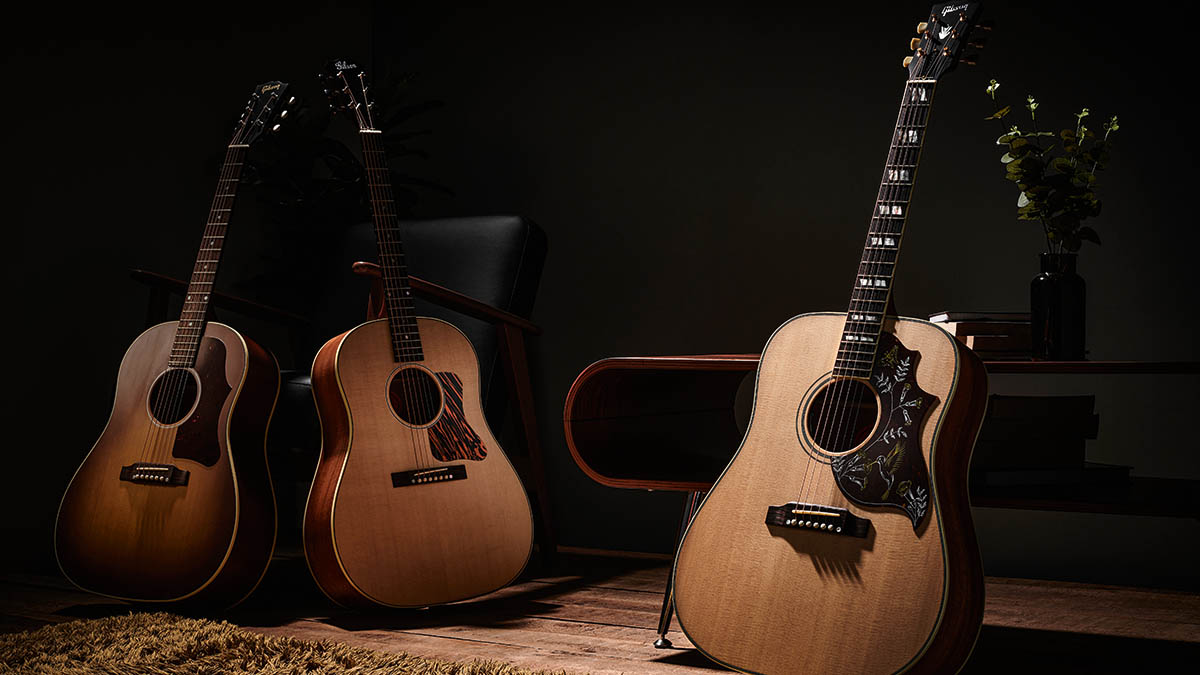Guitar World Verdict
If you dig the faded aesthetics, these are classic examples of Gibson’s acoustic craft, with a big sound and looks to match.
Pros
- +
The J-45 has heritage, history and full of character.
- +
Growling, husky basses.
- +
Likewise the Hummingbird, which also has sweet trebles.
- +
J-35 has good, balanced sound and historic appointments.
Cons
- -
The faded thing isn’t going to appeal to everyone.
- -
Slightly sharp fret ends on the J-35's treble side.
You can trust Guitar World
Following on from Gibson’s Faded ’50s and ’60s Les Pauls and the ’61 SG, it’s now the turn of these three dreadnoughts to step into the spotlight. And Gibson’s choice of models to sign up to its faded finish regime is an interesting one.
Basically, the whole idea sees guitars receiving a thin coat of nitrocellulose over bleached out bodies, as if you’ve reduced the colour saturation in some photo processing software.
When Gibson introduced its Faded series electric guitars back in 2005 they proved a somewhat surprising success, players eagerly taking to the satin finishes and slightly reduced retail prices. So why not extend the idea to the acoustic guitar catalogue, too, and see whether the somewhat more conservative unplugged community warms to the concept in the same fashion?
The three models chosen for the Faded treatment include the J-45, J-35 and Hummingbird, and of the three the bleached-out concept is most obvious on the ’45, the other two both having natural Sitka tops. Ironically, of course, these will slowly turn amber over the years, which kinda defeats the idea, but you’ll still have the satin feel and thin nitro to carry on with.
Also, we wouldn’t be doing our job if we didn’t point out that we’ve come across many vintage J-45s in our travels and none of them have lost that distinctive dark brown finish. So we’re guessing that Gibson is not going for the vintage vibe here, just literally a toned-down version of the original.
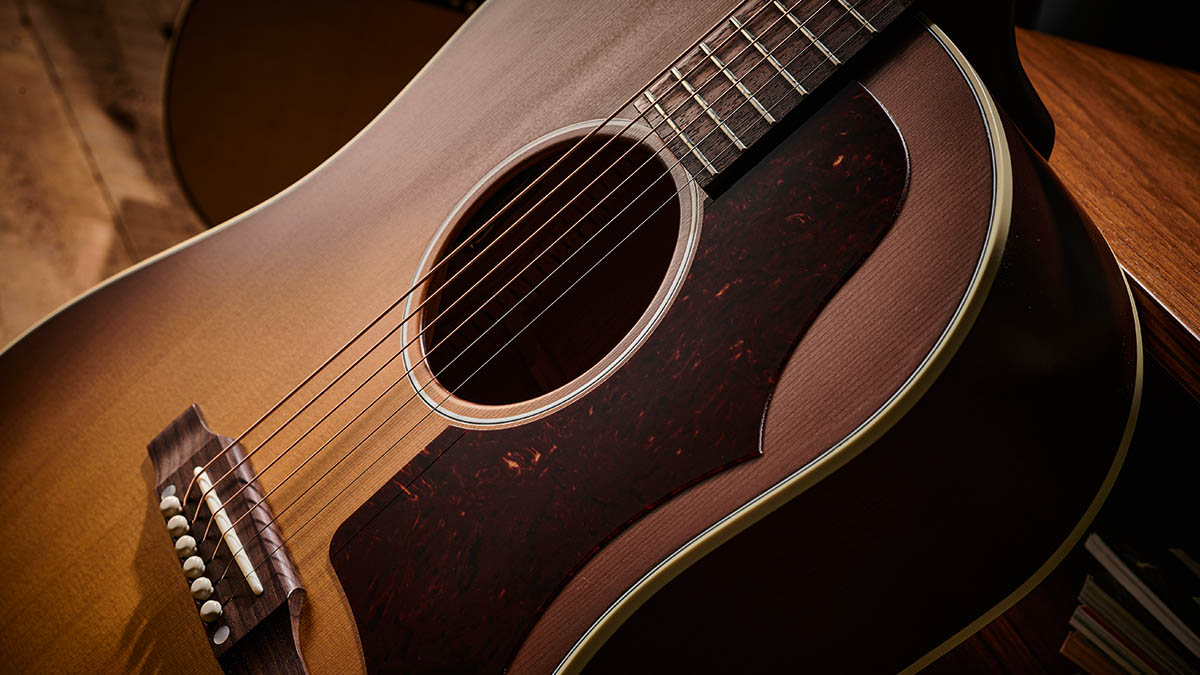
All three acoustics here have some history behind them. The J-45 is known as Gibson’s ‘workhorse’ acoustic and has found favour among the bluegrass crowd as well as singer-songwriters.
Originally introduced into the catalogue in 1942, Gibson has chosen to give this version a ’50s spec and to give the company credit, it does look like it could have been residing in an attic for a few decades.
All the latest guitar news, interviews, lessons, reviews, deals and more, direct to your inbox!
Sound-wise, the J-35 is quite possibly the most well balanced of the three – and it’s the cheapest
The J-35 is arguably lesser known. This model comes from the USA’s Depression era of the 1930s – 1936, to be precise – and came about as a pared-down, no-frills, affordable model for musicians of the day, costing only $35 at launch.
The Hummingbird, on the other hand, needs no introduction. A child of the ’60s, it’s one of Gibson’s most prestigious acoustics – and one of the costliest when it first saw light of day, second only to the ‘gentle giant’ J-200, in fact.
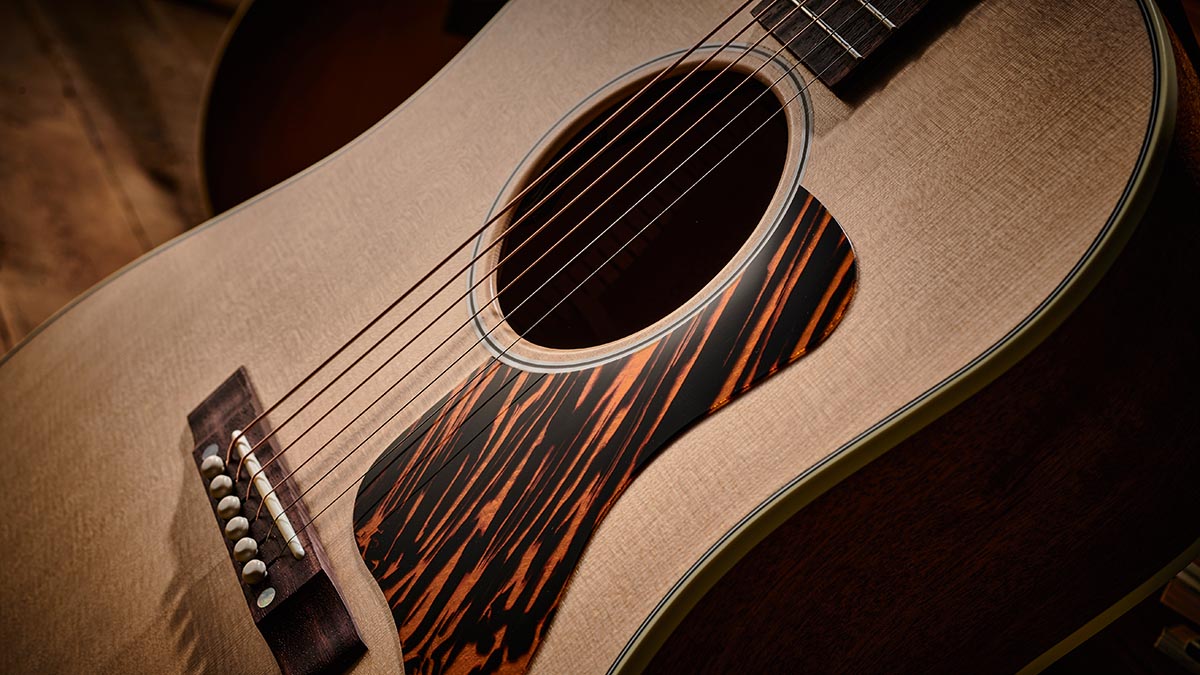
Despite the fact that the three models would seem to be separate from one another in terms of the era in which they were first launched, they are all surprisingly similar in terms of spec. For instance, they are all 406mm (16-inch) wide dreads, the J-35 and J-45 both round shouldered and the Hummingbird square shouldered. Tops are Sitka spruce, with mahogany for the backs and sides.
Necks are mahogany topped with rosewood fingerboards, the ’45 and Hummingbird sporting 20 frets apiece, the ’35, 19. All are fitted with LR Baggs VTC pickups/preamps with their controls – volume and tone – tucked away on the bass side of the soundhole.
There are some differences in terms of hardware and styling, of course, the ’45 and Hummingbird having Gotoh tuners – the J-45 white button, Kluson-style and the Hummingbird goes for gold Kluson-style with greenish keystone buttons. The J-35, meanwhile, has Grover open-back tuners.
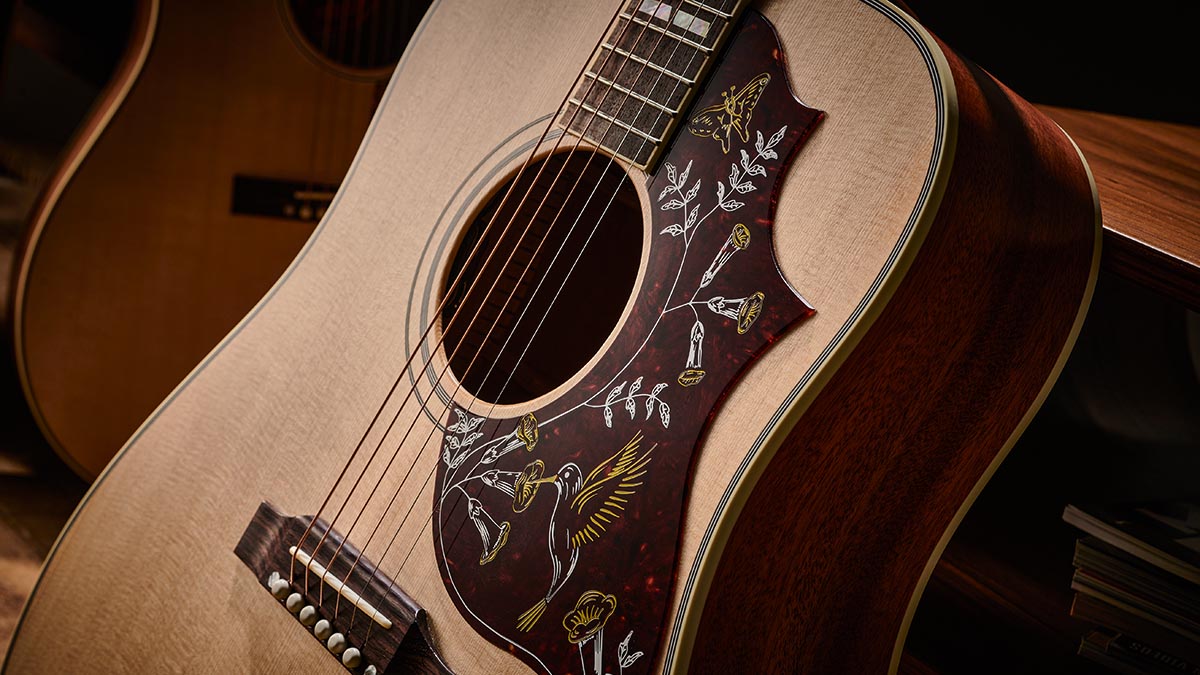
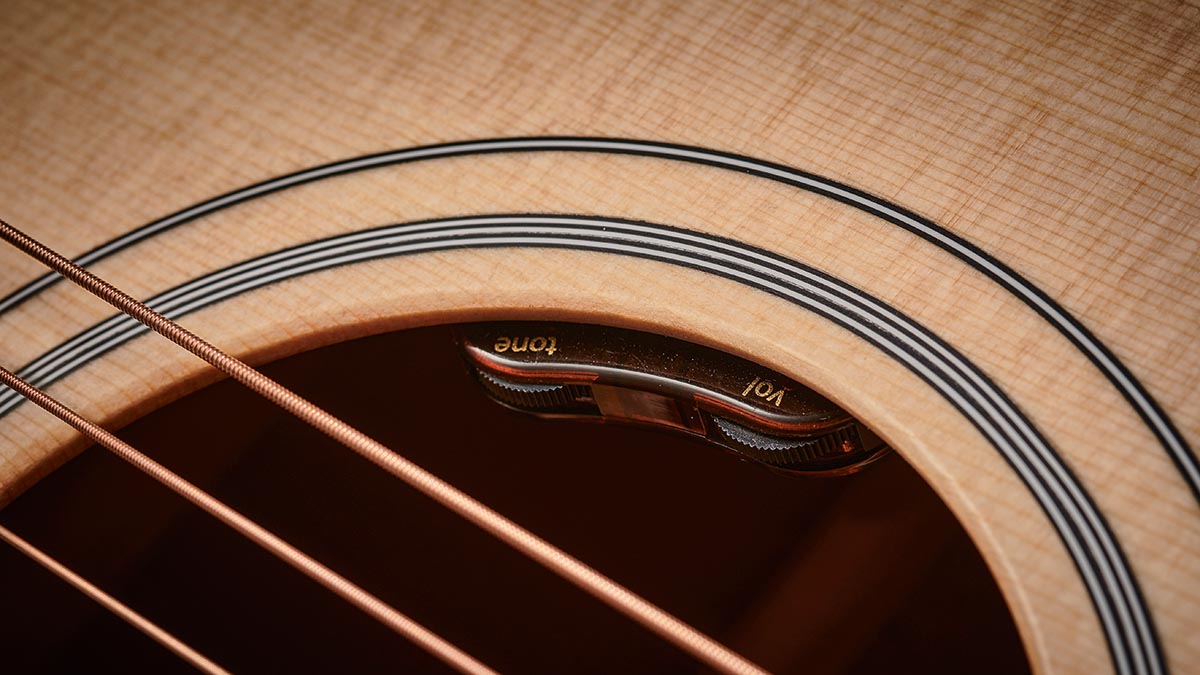
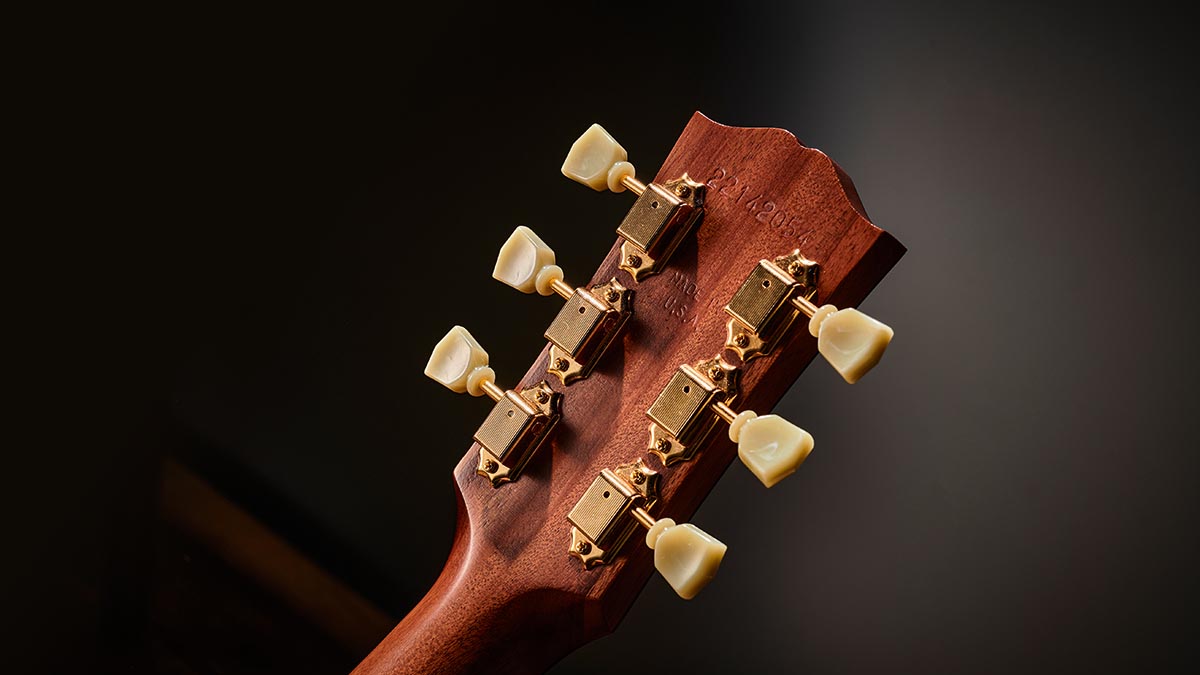
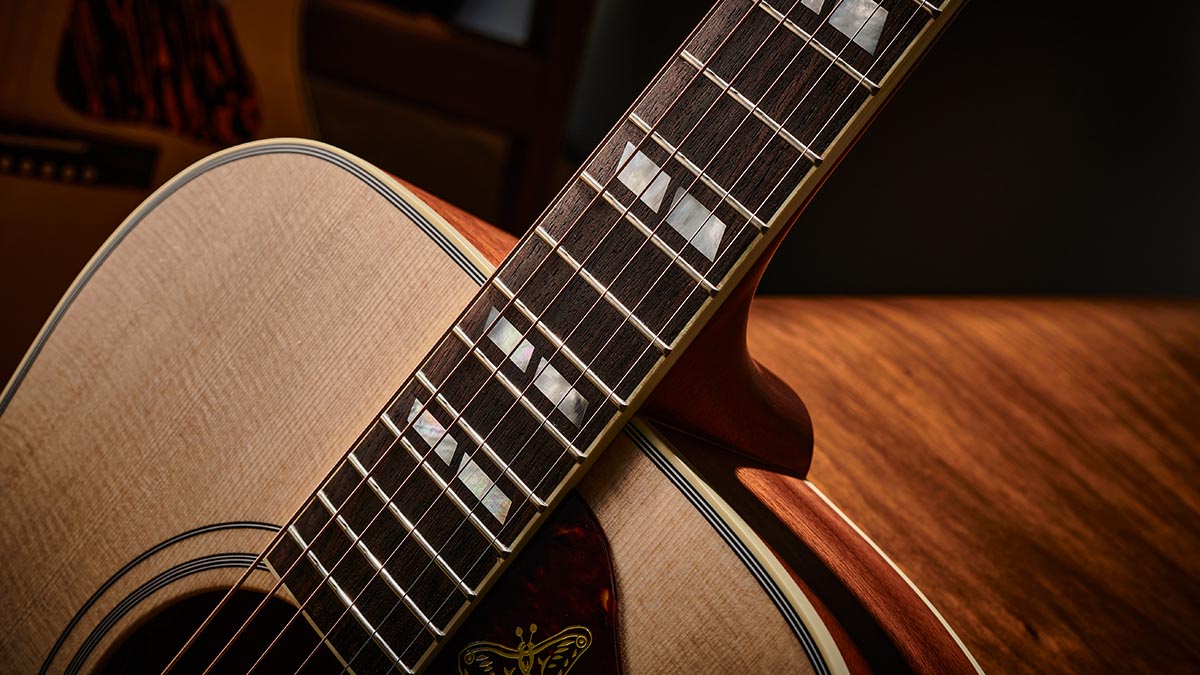
Underneath the tops, all three have hand‑scalloped X bracing. The neck profiles are what Gibson calls merely ‘rounded’, and the fretboard radius on each is a flat 305mm (12-inch) with the standard Gibson scale length.
With all these similarities, it’s going to be interesting to hear if there are any distinct tonal differences between the three models when we begin our explorations in that department shortly. But it’s fairly safe to say that any other variations on the themes already established are more of the cosmetic variety rather than constructional.
For instance, it’s fairly obvious from the accompanying photographs that the Hummingbird is the most ornate of the three here, with its signature highly figured scratchplate and mother-of-pearl parallelogram ’board inlays.
The J-35, then, occupies the other end of the decorative scale with a very stripped-down demeanour, the fiery scratchplate being its only distinguishing characteristic. It’s nice to see that it bears Gibson’s historic pre-war logo, too.
Feel & Sounds
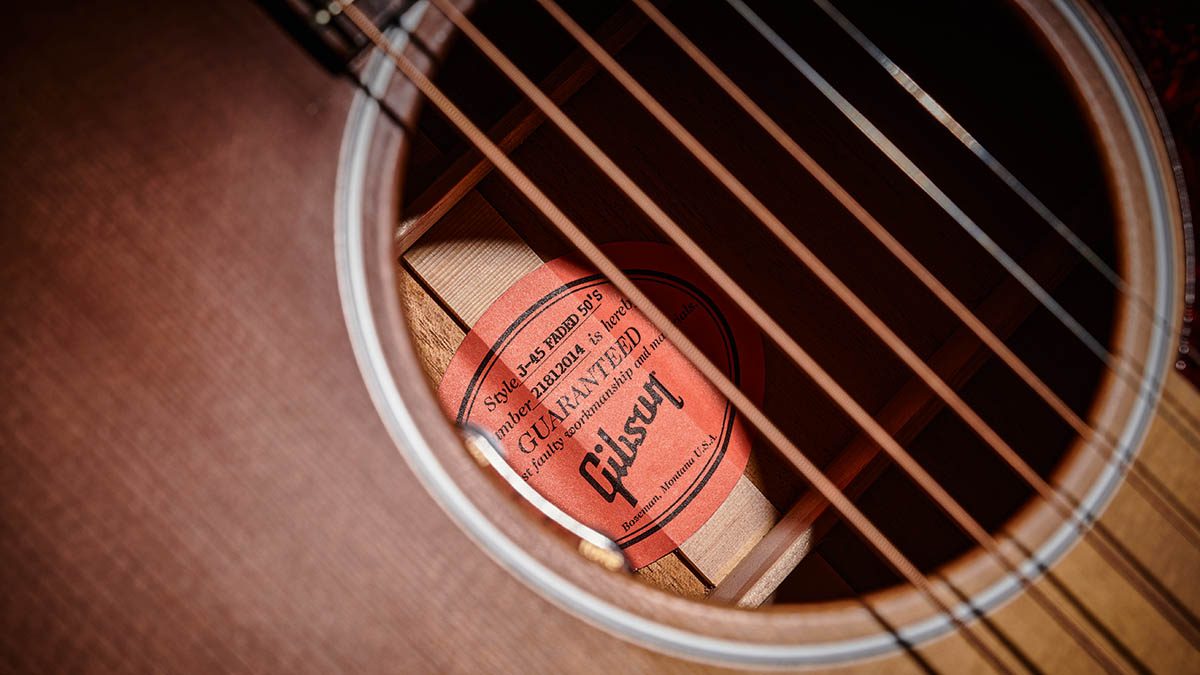
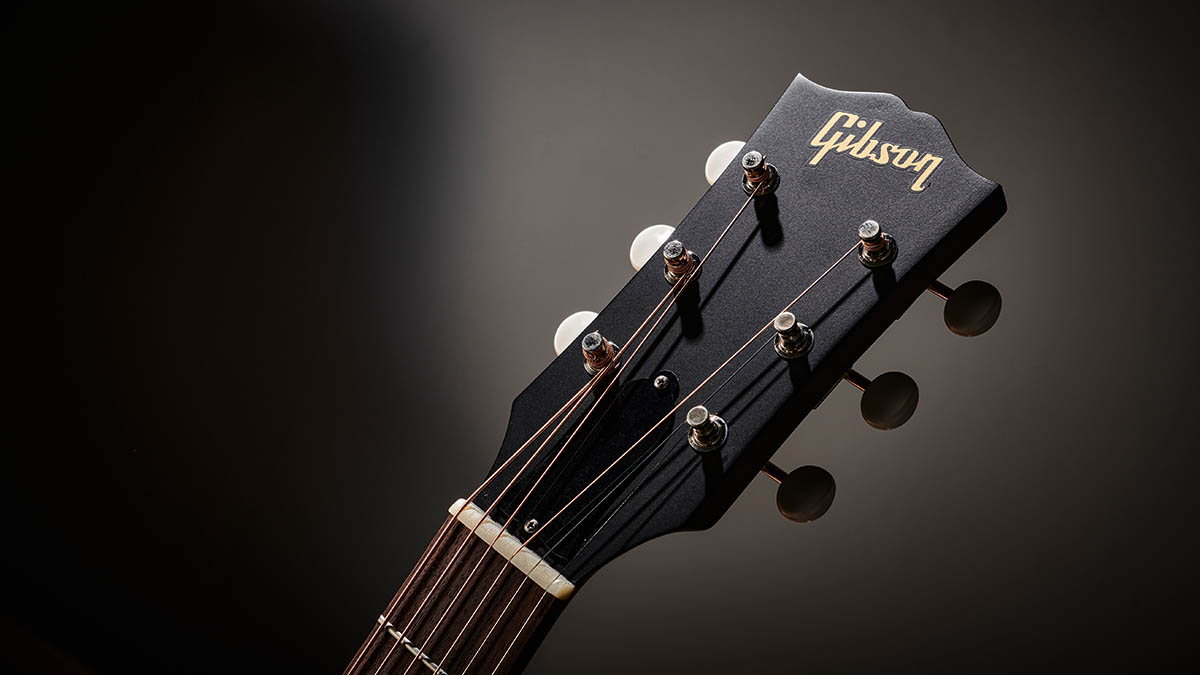
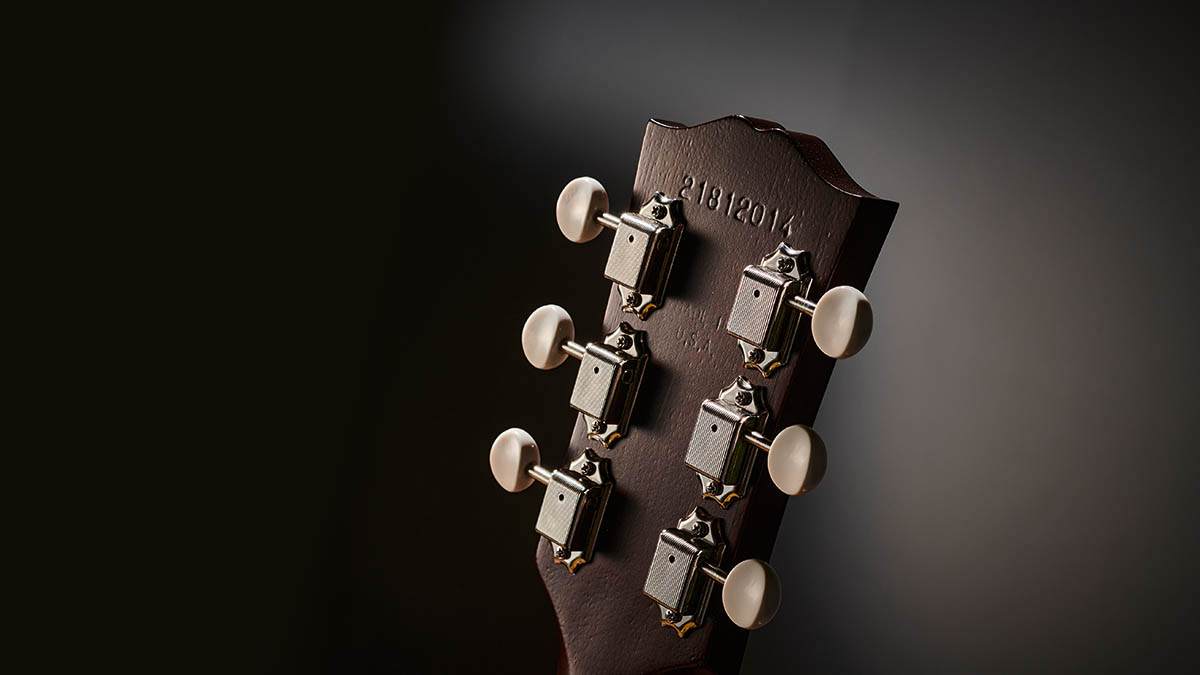
Taking each of the guitars in turn, we’ll begin with the J-45. The elephant in the room here, of course, is the degree of fading in the finish and, as we’ve already mentioned, the fact that this isn’t necessarily the way in which a traditional J-45 would age, if indeed ‘ageing’ is what Gibson is going for here.
This is most likely to be a deciding factor for many over and above the thin nitro finish consideration. In the short period that we had these instruments as house guests, let’s just say that the finish grew on us – in fact, it was quickly overwritten by the way the guitar sounds. A J-45 is known for its earthy, woody tones, with snarling bass and sweet trebles, and we weren’t let down in any of these respects here.
It would be true to say that it’s not the greatest-sounding ’45 we’ve heard; the basses are all present and correct, but the trebles didn’t gleam and shine in quite the way we’ve experienced in the past. Of course, this might change as the Sitka top wakes up a bit further down the road.
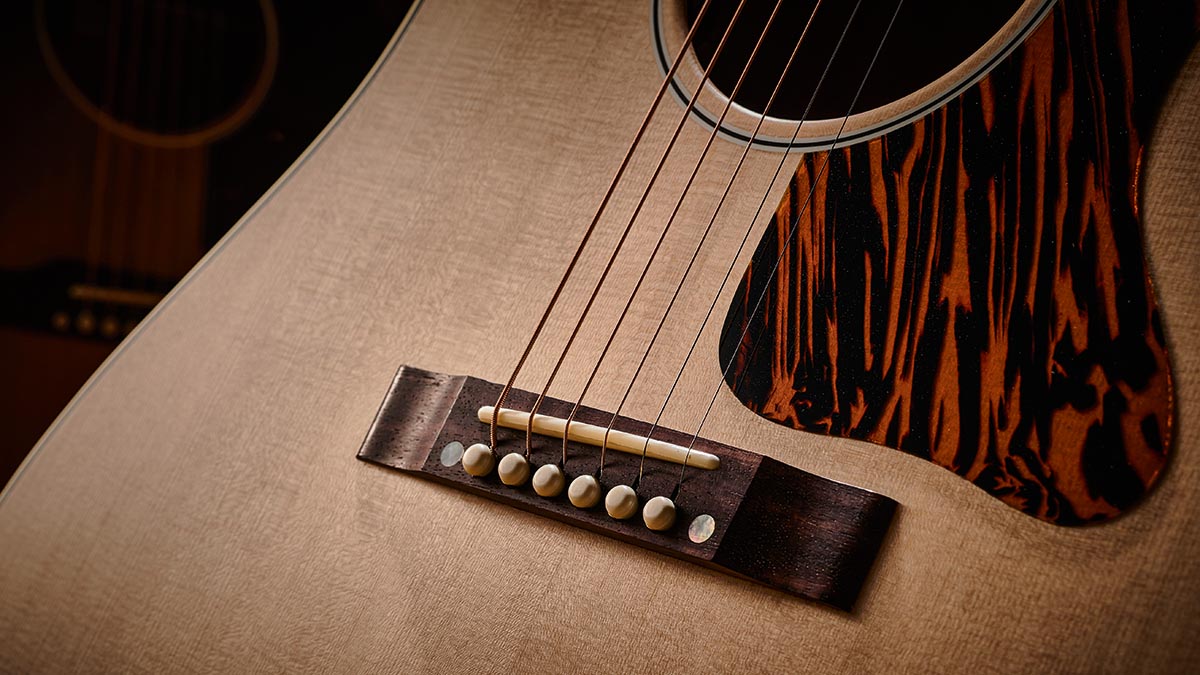
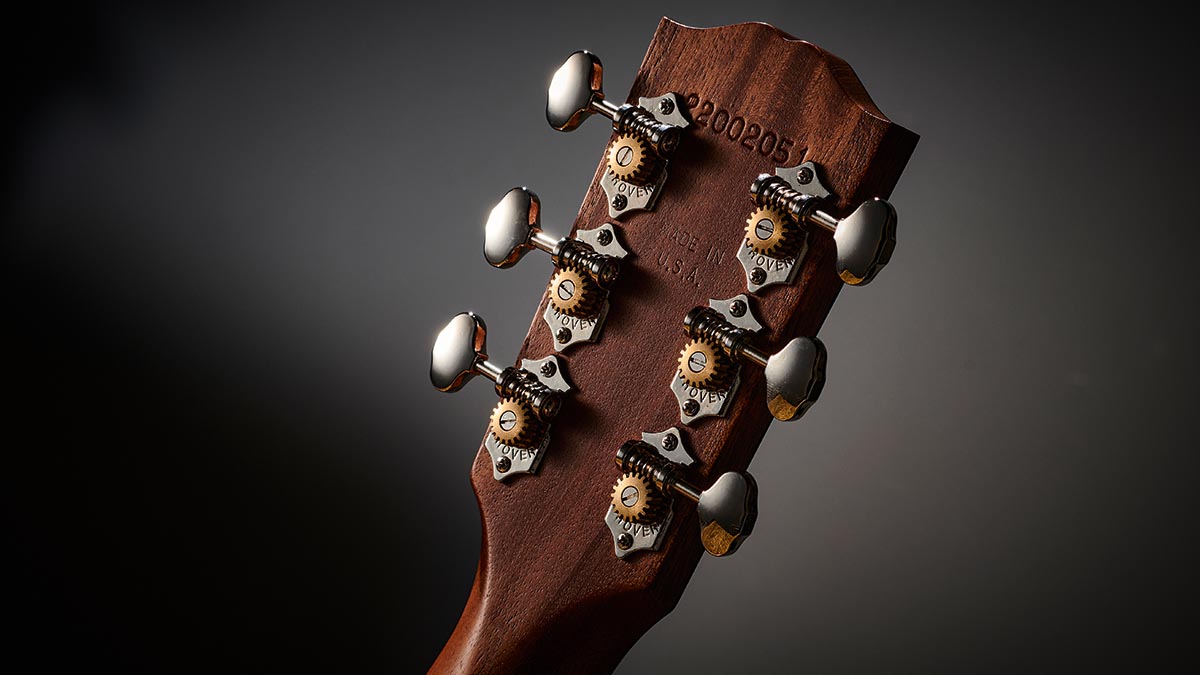
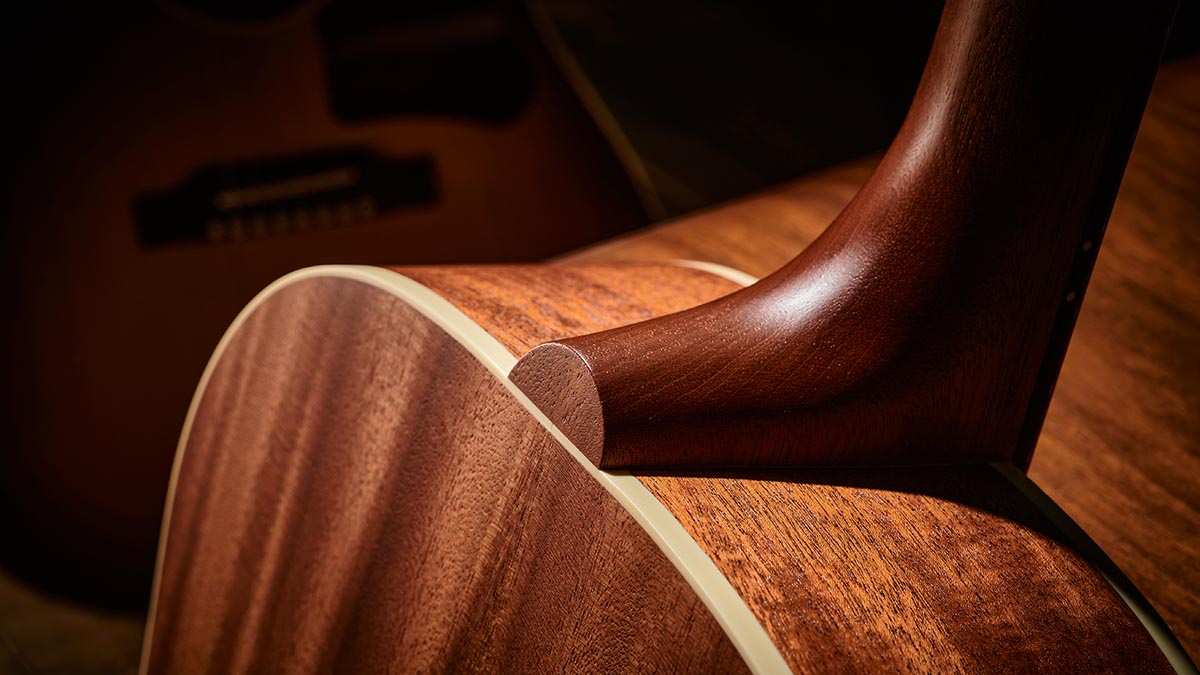
In terms of feel, the J-45 was pretty much as expected. The rounded, full but not too chubby feel of the neck felt good in the hand, campfire chords were effortless and girthy, solo expeditions further up the ’board rewarding and full. It’s a nice instrument, for sure.
Turning our attention to the J-35, we found that there were some sharp fret ends on the treble side of the fretboard – easily remedied and possibly due to shrinkage since manufacture but still a slight bump in an otherwise smooth road. Sound-wise, it’s quite possibly the most well balanced of the three – and considering that it’s also the cheapest, this is something to bear in mind.
Trebles shine more than on its J-45 cousin, but perhaps at the cost of a slight reduction in the bass. Any growl or bark hereabouts has been replaced by a proportionate low-frequency response.

With the Hummingbird, we’re instantly back to girthy basses and powerful mellifluous trebles, as befits the flagship of this particular fleet of three. In fact, it slightly outclasses the J-45 in this respect – technically, the square-shoulder aspect here should make a small difference and, if so, this is probably it.
It hints at being the all-rounder it always was and no faded livery is going to affect that. The thin nitro coating must also play its role as it will allow the body timbers to vibrate more freely, but this ’Bird certainly wins the best in class on this occasion.
Firing up the onboard LR Baggs VTC pickups on all three reveals pretty much what we expected in that the character of each is cleanly and efficiently transported to the electronic realm. There’s also the added charm that it’s possible here to tame the basses a bit on the J-45 and use the tone control to bring the trebles in check should the need arise.
Verdict
Whatever we think of these instruments, we have to add to the equation the fact that these faded dreads are only a few hundred dollars cheaper than the standard full gloss versions – and looking around the internet the gap is narrowed by some of the prices retailers are selling the standard equivalents for. So a purchase here isn’t a way into getting a Gibson dread ‘on the cheap’.
In many ways, you’d be buying them because you enjoy the faded finishes and the thin nitro feel present here. That kind of decision can only be made in a hands-on situation.
Our opinion is that the J-35 and Hummingbird come down to the thin finish – those tops are going to darken with age. It just leaves the paleness of the J-45 to consider. We lived with it and ended up liking it. Would we add it to our collection? Certainly. But it may be a different matter for you. The advice here, then, is if the whole concept of faded finishes appeals – or at least doesn’t appeal – seek them out and give them an audition of your own. We like ’em and you might, too.
Specs
Gibson J-45 50s Faded
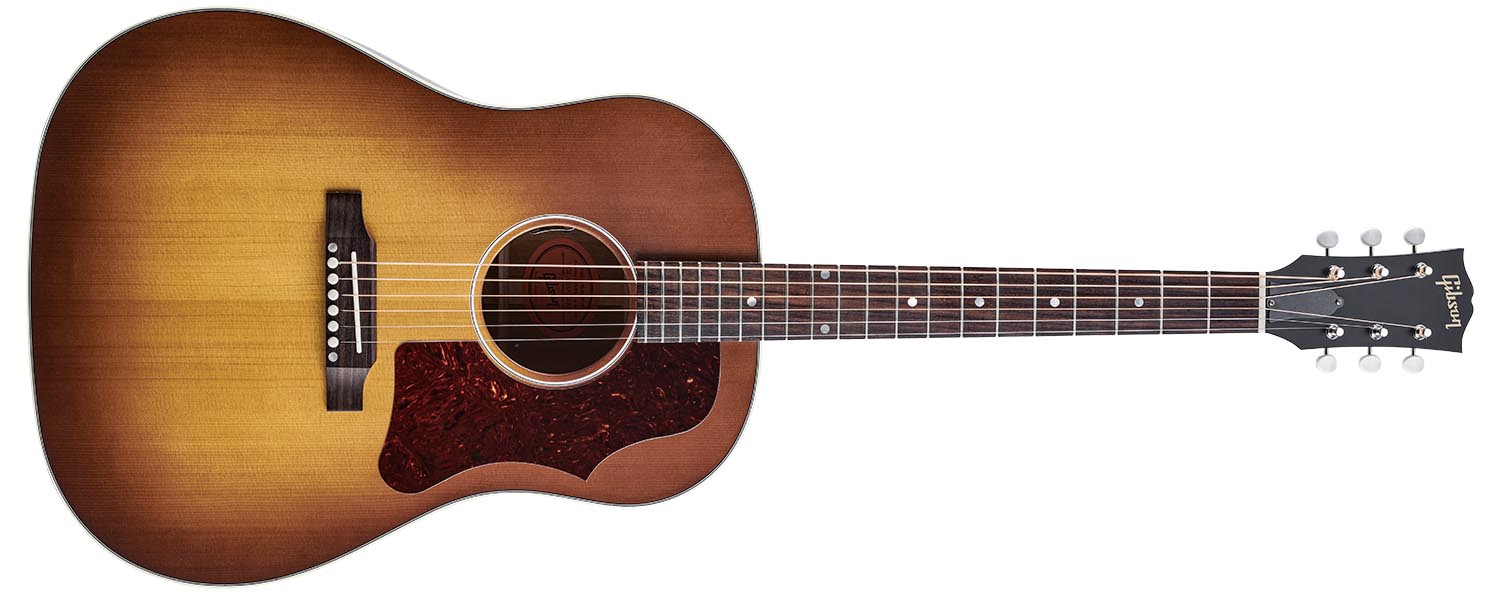
- PRICE: $2,499 / £2,169 (inc case)
- ORIGIN: USA
- TYPE: Round shoulder dreadnought
- TOP: Sitka spruce
- BACK/SIDES: Mahogany
- MAX RIM DEPTH: 103mm
- MAX BODY WIDTH: 406mm
- NECK: Mahogany
- SCALE LENGTH: 628mm (24.75”)
- TUNERS: Gotoh white button
- NUT/WIDTH: Bone/43.8mm
- FINGERBOARD: Rosewood
- FRETS: 20
- BRIDGE/SPACING: Rosewood/56mm
- ELECTRICS: LR Baggs VTC
- WEIGHT (kg/lb): 1.45/3.2
- OPTIONS: None
- RANGE OPTIONS: Gibson’s Faded acoustic range also comprises the J-45, Hummingbird and J-35 on review
- LEFT-HANDERS: No
- FINISH: Satin nitrocellulose
Gibson J-35 30s Faded
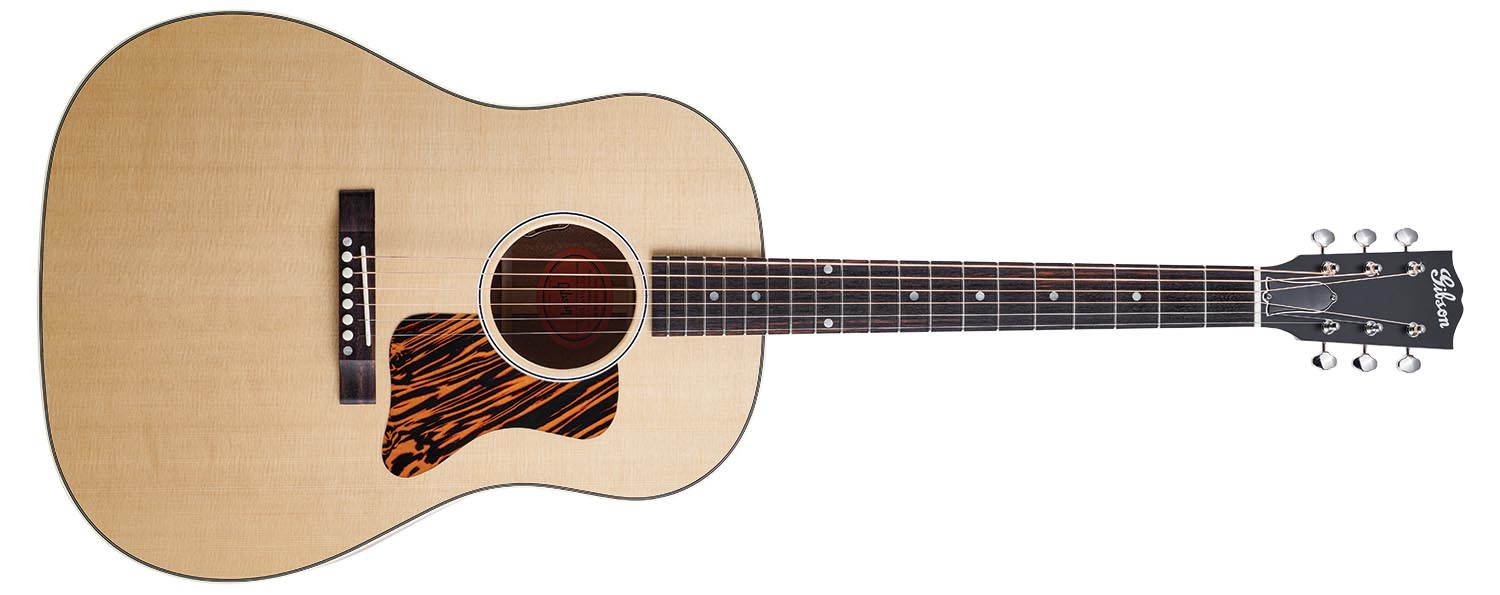
- PRICE: $2,199 / £1,909 (inc case)
- ORIGIN: USA
- TYPE: Round shoulder dreadnought
- TOP: Sitka spruce
- BACK/SIDES: Mahogany
- MAX RIM DEPTH: 103mm
- MAX BODY WIDTH: 406mm
- NECK: Mahogany
- SCALE LENGTH: 628mm (24.75”)
- TUNERS: Grover open back
- NUT/WIDTH: Bone/43.8mm
- FINGERBOARD: Rosewood
- FRETS: 19
- BRIDGE/SPACING: Rosewood/56mm
- ELECTRICS: LR Baggs VTC
- WEIGHT (kg/lb): 1.63/3.6
- OPTIONS: None
- RANGE OPTIONS: See other guitars on review
- LEFT-HANDERS: No
- FINISH: Satin nitrocellulose
Gibson Hummingbird Faded
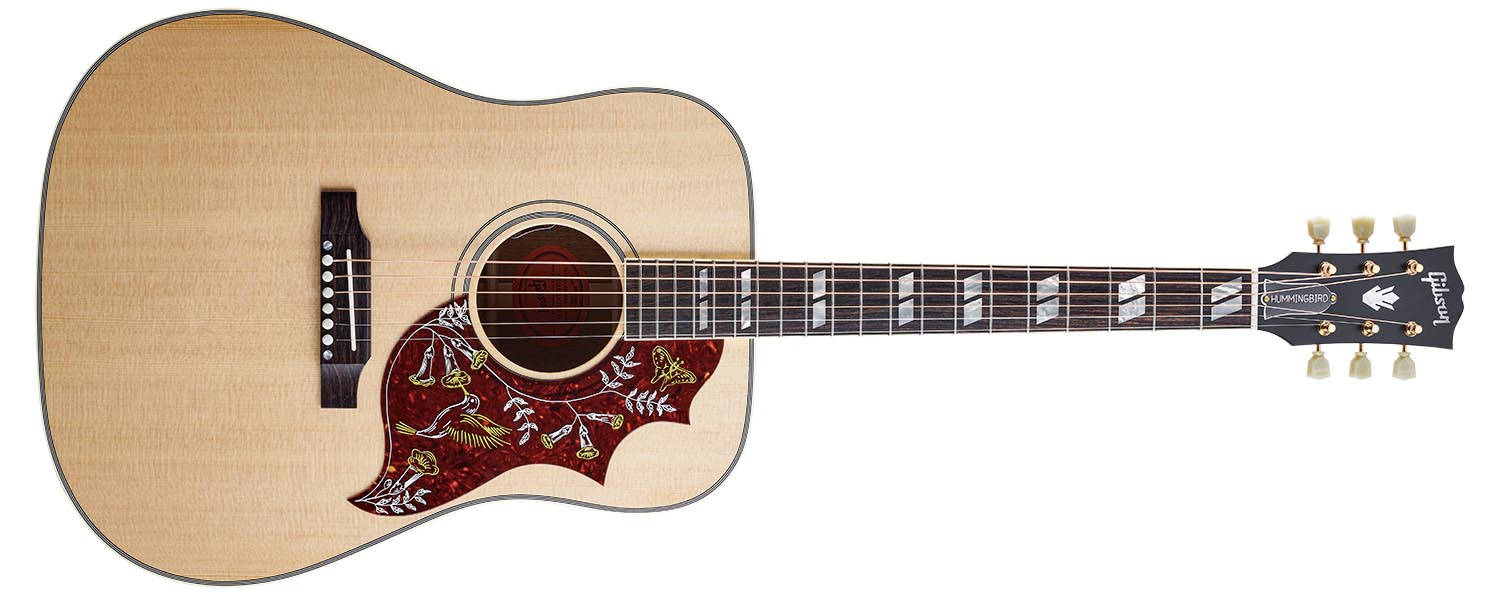
- Price: $3,499 / £3,039 (inc case)
- Origin: USA
- Type: Square shoulder dreadnought
- Top: Sitka spruce
- Back/Sides: Mahogany
- Max Rim Depth: 113mm
- Max Body Width: 406mm
- Neck: Mahogany
- Scale Length: 628mm (24.75”)
- Tuners: Gold Gotoh/
keystone buttons - Nut/Width: Bone/43.8mm
- Fingerboard: Rosewood
- Frets: 20
- Bridge/Spacing: Rosewood/56mm
- Electrics: LR Baggs VTC
- Weight (kg/lb): 1.68/3.72
- Options: None
- Range Options: See other guitars on review
- Left-Handers: No
- Finish: Satin nitrocellulose
With over 30 years’ experience writing for guitar magazines, including at one time occupying the role of editor for Guitarist and Guitar Techniques, David is also the best-selling author of a number of guitar books for Sanctuary Publishing, Music Sales, Mel Bay and Hal Leonard. As a player he has performed with blues sax legend Dick Heckstall-Smith, played rock ’n’ roll in Marty Wilde’s band, duetted with Martin Taylor and taken part in charity gigs backing Gary Moore, Bernie Marsden and Robbie McIntosh, among others. An avid composer of acoustic guitar instrumentals, he has released two acclaimed albums, Nocturnal and Arboretum.
